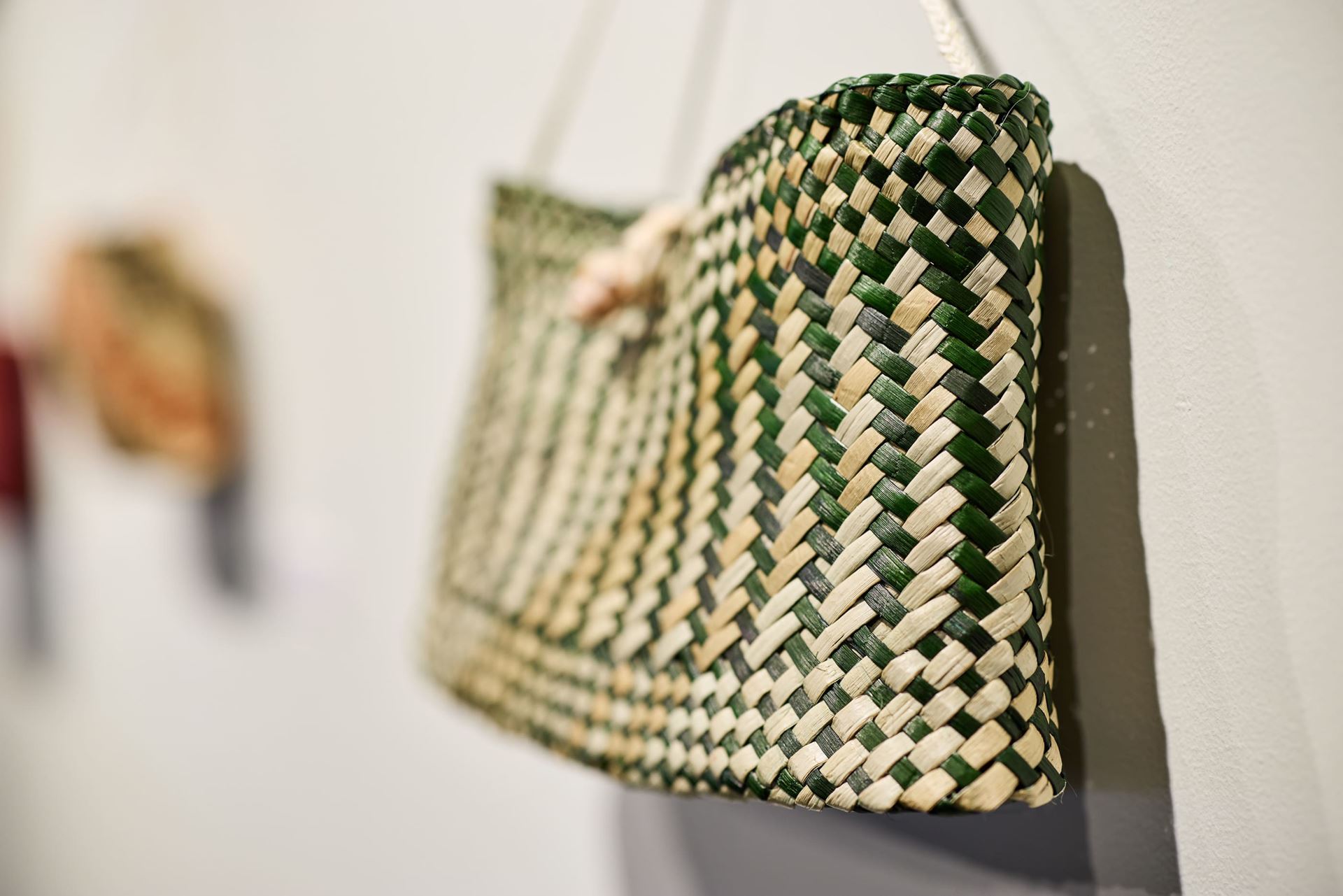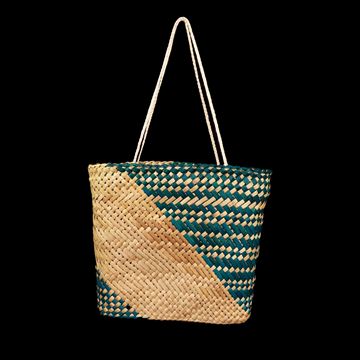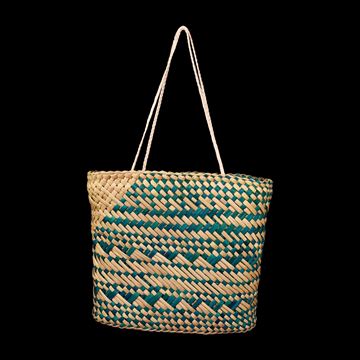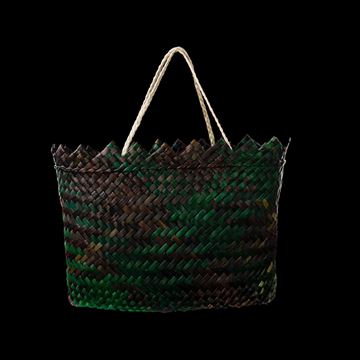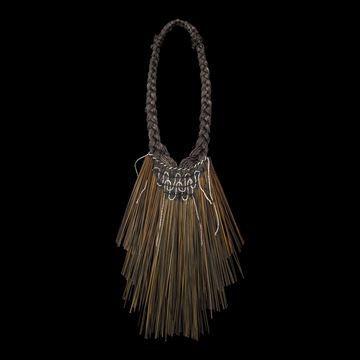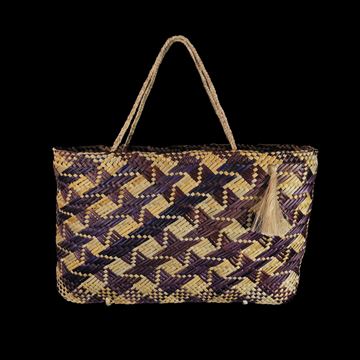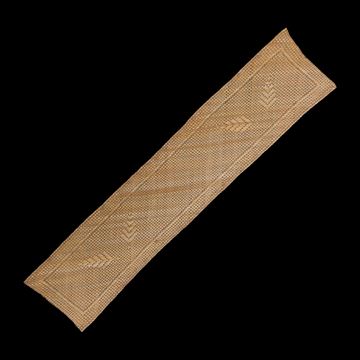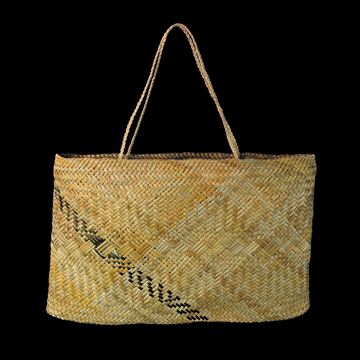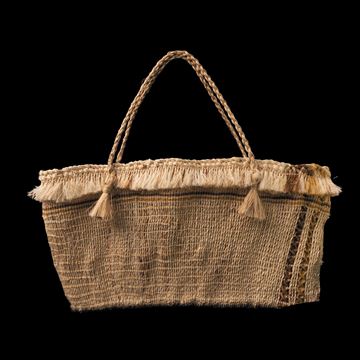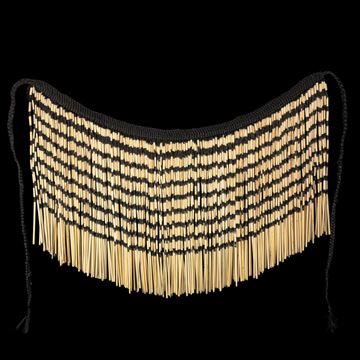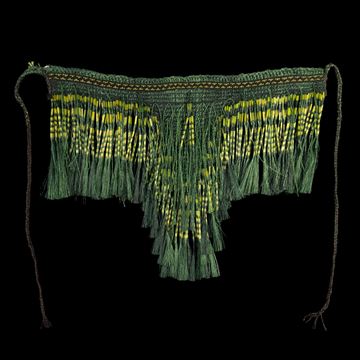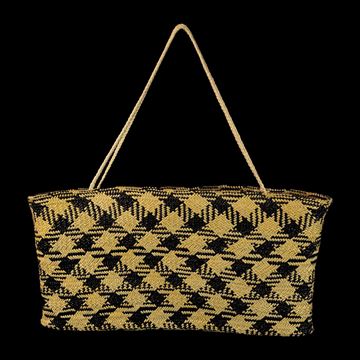Te Rito, named after the baby shoot at the heart of the flax bush, was built in 1994. At this school, male and female students have the honour of learning traditional Māori weaving techniques, as taught by experienced tutors. This tohu is for 2 years and is 40 hours per week, 47 weeks of the year.
Would you like something custom made especially for you? Commission a piece here
Kete Whakairo - 5819RW
Kete whakairo are woven flax bags of a finer quality than the general utilitarian kete. They are normally made from prepared strips of flax and/or kiekie, some of which have been dyed. Kete whakairo may also feature geometric designs.
Material: Harakeke & Muka
Measurements: 260mm x 220mm
$540.00
Kete Whakairo - 5820RW
Kete whakairo are woven flax bags of a finer quality than the general utilitarian kete. They are normally made from prepared strips of flax and/or kiekie, some of which have been dyed. Kete whakairo may also feature geometric designs.
Material: Harakeke & Muka
Measurements: 260mm x 230mm
$540.00
Kete Whakairo - 5826RW
Kete whakairo are woven flax bags of a finer quality than the general utilitarian kete. They are normally made from prepared strips of flax and/or kiekie, some of which have been dyed. Kete whakairo may also feature geometric designs.
Material: Harakeke
Measurements: 260mm x 210mm
$540.00
Hei Piu - 4918TE
Hei piu (neck piece) is a contemporary fashion statement utilising Māori tradition.
Material: Harakeke & Muka
Measurements: 350mm x 170mm
$690.00
Kete Whakairo - 5905AY
Kete whakairo are woven flax bags of a finer quality than the general utilitarian kete. They are normally made from prepared strips of flax and/or kiekie, some of which have been dyed. Kete whakairo may also feature geometric designs.
Material: Harakeke, Muka & Commercial dyes
Measurements: 360mm x 220mm
$690.00
Takapapa - 5129HM
In former times, marae had no wharekai (dining halls) to what we are familiar with today. During those times, specific ‘food mats’ were laid out in the middle of the wharenui (meeting house) and the food for the manuhiri (guest) was placed on them. This takapapa has been weaved to be used as a table runner.
Material: Harakeke
Measurements: 1110mm x 230mm
$750.00
Kete Whakairo - 5907AY
Kete whakairo are woven flax bags of a finer quality than the general utilitarian kete. They are normally made from prepared strips of flax and/or kiekie, some of which have been dyed. Kete whakairo may also feature geometric designs.
Material: Harakeke, Muka & Gold Foil
Measurements: 420mm x 250mm x 60mm
$750.00
Kete Muka - 6761AE
Kete Muka are special woven baskets made from muka, the soft inner fibre of harakeke (New Zealand flax). These kete are created using the whatu technique, a traditional method of hand weaving that was also used to make kākahu (cloaks). This technique involves carefully interlocking the fibres by hand, without machines or modern tools, and has been passed down through generations of Māori weavers.
In the past, kete muka were used to carry or store valuable items, such as feathers, adornments, or other important taonga (treasures). Because they are made from fine fibre and woven with great care, they were considered more special than everyday kete made from unprocessed flax.
Material: Muka & Natural Dyes
Measurements: 285mm x 145mm x 20mm
$890.00
Tāniko Belt - 2726TE
Tāniko weaving produces a relatively stiff and unyielding fabric, it was traditionally used as a decorative border on fine cloaks of the kaitaka and paepaeroa types. Often several different strips of tāniko appeared on up to three sides of a cloak.
Material: Acrylic Cotton, Leather Lining, Macrame Silks
Measurements: 1150mm x 40mm
$990.00
Piupiu (Tāne) - 5954AF
The word 'piupiu' means 'to swing’ and is also the name for a skirt with free-hanging strands. Piupiu can be worn either around the waist or across one shoulder. They were made in many types of material and styles.
Material: Harakeke
Measurements: 32.5 inches
$1,090.00
Maro - 4905TE
The maro is a frontal apron tied around the waist and is a traditional garment that is worn by both men and woman. This maro has been fashioned with strands of muka fibre within the flax.
Material: Harakeke & Muka
Measurements: 680mm x 480mm
$1,395.00
Kete Whakairo - 6002CM
Kete whakairo are woven flax bags of a finer quality than the general utilitarian kete. They are normally made from prepared strips of flax and/or kiekie, some of which have been dyed. Kete whakairo may also feature geometric designs.
Material: Harakeke & Muka
Measurements: 380mm x 180mm x 40mm
$1,900.00

